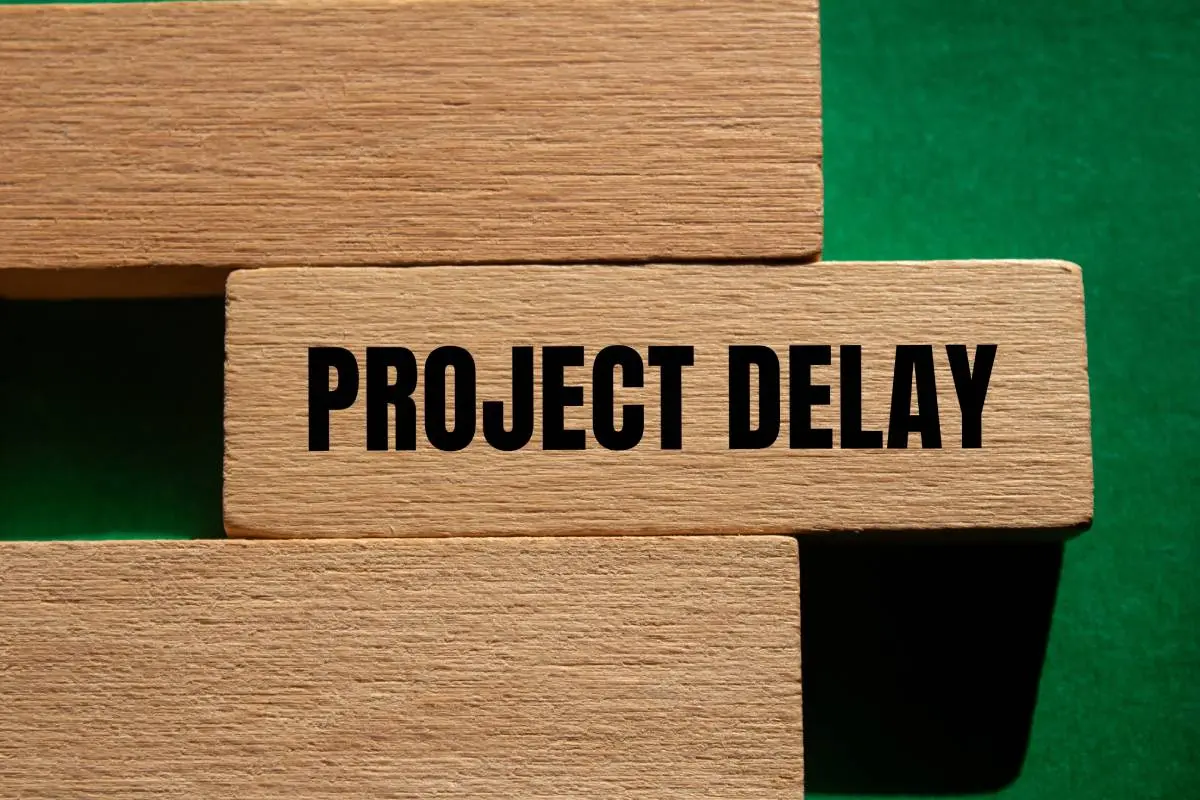Table of Contents
- Reasons Why Delays Happen
- Setting Realistic Project Timelines from the Start
- Managing Client Expectations Before Construction Begins
- How to Handle a Construction Project Delay in Real Time
- Construction Delay Claims 101: Protecting Your Business
- Money Keeps Projects Moving: Use Financing to Reduce Delay Risk
- FAQ
- Sum Up
Construction delays happen even to the most organized crews. Weather conditions, back-ordered materials, or a late permit can push schedules, inflate costs, and test client patience.
When you set realistic timelines, communicate clearly, and document issues properly, you can minimize disruption and protect your reputation — even when a construction project delay is unavoidable.

Below, you’ll learn how to build more accurate schedules, create buffers, prepare clients for the “what-ifs,” manage construction delay claims, and use a construction delay analysis after the fact to improve your next bid.
Reasons Why Delays Happen
Most construction project delay issues come from a handful of predictable sources:
- Supply chain problems (lead times for windows, doors, HVAC equipment)
- Weather (rain, heat waves, storms that halt exterior work)
- Permits or inspections (backlogs or reinspection requirements)
- Labor constraints (subcontractor availability, crew illness)
- Scope creep (client-requested changes, late selections)
A construction delay analysis after each phase helps you pinpoint patterns (e.g., a specific vendor’s recurring lead-time variance) so you can sharpen your next estimate and build better buffers.
Industry guides for preventing project delays emphasize using past performance data, diversifying suppliers, and memorializing risk allocations in your contracts — all habits that reduce repeat slippage.
Setting Realistic Project Timelines from the Start
Before you start work on any type of project, make sure you draft a timeline that articulates the steps and construction plans thoroughly:
- Estimate with history, not hope. Pull durations from previous similar jobs and adjust for seasonal weather conditions.
- Detail the critical path. Sequence long-lead items (e.g., custom windows) early. Get vendor-confirmed ETAs in writing.
- Add explicit buffers. Put weather, inspection, and delivery contingencies into your baseline schedule. Buffers aren’t excuses — they’re transparency.
- Milestone contracts. Break projects into measurable phases (demo, rough-in, inspections, finishes) with target dates. This makes progress trackable and expectations clear.
- Decision deadlines. Lock down selections (tile, fixtures, appliances) by specific dates so procurement can stay ahead of the crew.
- Payment triggers and cash flow. Ensure deposits and progress draws align with procurement so you can order materials on time and avoid construction delays caused by funding gaps.
Pro Tip: Some contractor financing partners offer milestone-based payouts, which can help keep procurement on schedule.
Managing Client Expectations Before Construction Begins
Clients don’t expect perfection; they expect honesty and a plan. Before you begin construction, consider these tips:
- Explain common risks. Walk clients through the top construction delays they might encounter (weather, inspection windows, supply chain).
- Share the communication cadence. Promise regular updates (e.g., twice weekly) and name the person who will send them.
- Define change-order rules. When do changes freeze? Who approves? How do changes extend time and cost?
- Publish a “what-if” playbook. If X happens (e.g., failed inspection), here’s how we respond, how long it usually takes to recover, and who contacts whom.
While many contractors focus primarily on pricing their estimates, it’s just as important to provide a realistic, well-planned timeline. Clients value transparency and preparation as much as cost clarity.
How to Handle a Construction Project Delay in Real Time
Even with excellent planning, you’ll eventually face a construction project delay. Here’s a professional, customer-first protocol:
- Notify immediately. Don’t wait for the weekly update. Call the homeowner, then follow up in writing, summarizing everything that’s been done.
- Give options, not just problems. Offer two or three recovery paths (e.g., alternative in-stock materials, temporary weather protection, overtime/weekend work when feasible).
- Rebaseline the schedule. Provide a revised schedule with new target dates and goals.
- Document everything. Keep emails, vendor notices, inspection reports, and photos. This supports your position if questions arise about fault or future construction delay claims.
- Be empathetic. Acknowledge the homeowner’s inconvenience and offer small gestures if appropriate (quick upgrades, extra cleanup, off-hours work windows).
In your contractor tool kit, consistent communication is often an underrated instrument. When delays happen, clear and proactive communication can strengthen the relationship and earn repeat business from clients who value honesty over speed.
Documenting Excusable vs. Non-Excusable Delays
From a risk perspective, not all construction delays are equal. Excusable delays are beyond the contractor’s control (e.g., unusually severe weather, government actions, strikes, freight embargoes). Non-excusable delays stem from the contractor or subs (e.g., poor planning, inadequate staffing).

One tip is to align your daily reports to the language in your contract. If it lists “unusually severe weather,” note the specific conditions (e.g., inches of rainfall, heat index), attach local weather data, and record the work that was reasonably prevented.
Construction Delay Claims 101: Protecting Your Business
A construction delay claim is the formal process to seek time relief (and sometimes cost relief) for impacts outside your control, or to respond if an owner alleges non-performance.
- Follow notice requirements. Most contracts require prompt written notice of events causing delays.
- Maintain records. Meeting minutes, daily logs, inspection results, delivery notices, and correspondence are your evidence trail.
- Know your remedies. Time extensions, adjustments, or suspension/stop-work clauses may apply depending on the contract form.
When in doubt, consult counsel, especially if an owner threatens back-charges or liquidated damages. Your best defense is a proactive offense: clear scheduling logic, timely notices, and objective documentation.
Make Construction Delay Analysis Part of Your Closeout
After every project or whenever a significant delay happens, take time to review what went wrong and how to prevent it next time.
- Compare planned vs. actual: Look at your original schedule and note where work ran longer than expected.
- Spot delay patterns: Identify which phases or trades caused the most significant slowdowns and when they occurred.
- Find the root cause: Decide why each delay happened — materials, weather, inspections, client changes, or internal issues.
- Apply lessons learned: Use what you find to update policies, such as ordering materials earlier, locking design choices sooner, or adding extra time for weather delays.
Money Keeps Projects Moving: Use Financing to Reduce Delay Risk
Cash-flow pinches can snowball into construction delays: materials don’t get ordered, subs wait to mobilize, and you burn your buffer. Embedded lending for contractors can help by giving homeowners access to funds for upgrades or change orders.
- Why It Matters: You can order materials sooner, lock pricing, and avoid pauses while clients “figure out” payment.
- How to Implement: Offer financing at the estimated time and in every change-order conversation.
FAQ
When Contractors Overpromise on Timelines, What Impact Does That Have on Customer Trust?
Overpromising on timelines can quickly damage customer trust. The best business practice is to be honest and set realistic expectations from the start to avoid eroding both trust and financial confidence. Don’t overpromise and underdeliver.
Which Types of Home Improvement Projects Are Most Prone to Timeline Issues?
Projects that require permits or specialized materials are most prone to timeline issues. Waiting for permit approval can delay the start date, and supply chain slowdowns can stall progress.
Work that depends on subcontractors — such as electrical, plumbing, or roofing — may also experience setbacks since these professionals often juggle multiple clients. Additionally, outdoor projects like roofing, siding, or decks are vulnerable to weather-related delays.
What Are the Most Effective Ways to Retain the Customer and Avoid Cancellations During Delays?
The contract should include provisions for delays to protect the contractor from charges. Keep homeowners informed about progress, causes of delays, and updated timelines.
Providing regular updates, showing accountability, and demonstrating steady progress can help maintain trust. When clients feel included and informed, they’re far less likely to cancel or look for another contractor.
Sum Up
You can’t eliminate construction delays, but you can make them predictable, manageable, and far less painful for clients. Build realistic schedules from historical data, install buffers, and set expectations before work starts. When the unexpected strikes, communicate quickly, document thoroughly, and present recovery options. After turnover, analyze what slipped and why, so the next estimate is sharper.
Table of Contents
- Reasons Why Delays Happen
- Setting Realistic Project Timelines from the Start
- Managing Client Expectations Before Construction Begins
- How to Handle a Construction Project Delay in Real Time
- Construction Delay Claims 101: Protecting Your Business
- Money Keeps Projects Moving: Use Financing to Reduce Delay Risk
- FAQ
- Sum Up


